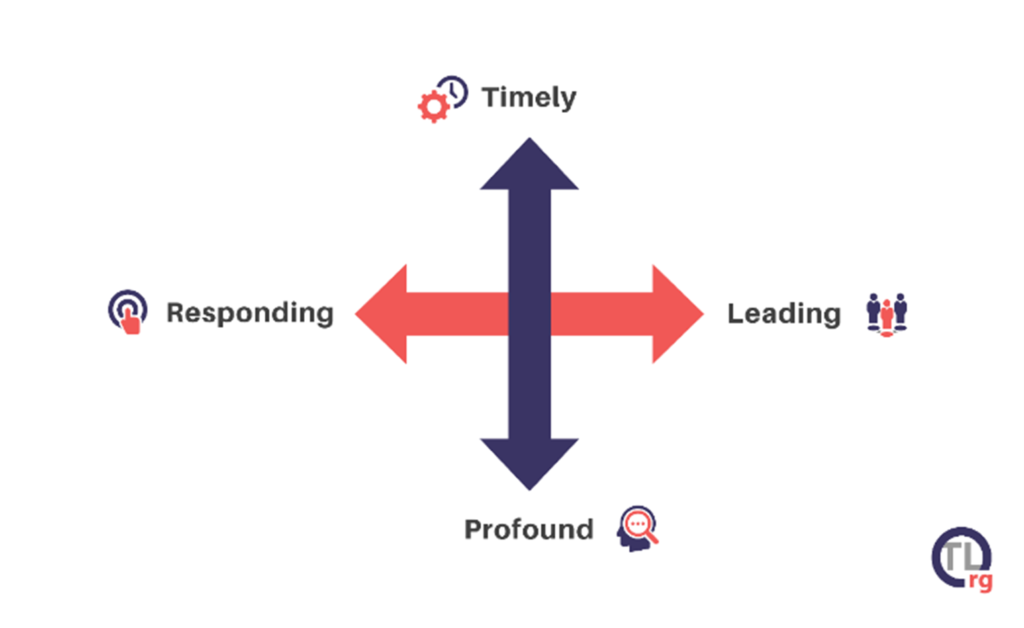How should thought leadership practitioners respond to a swiftly changing world?
I’d like to share a technique that I call the thought leadership stance.
As I write this month’s newsletter, new technologies and methods are changing the world in thousands of global industries. Some advancements are obvious; others will take years to “catch on.”
So, how do we, as thought leadership practitioners, keep up?
Thought leadership cannot predict the future with one-hundred percent accuracy. We may strive to “see around corners,” but we don’t have a magical crystal ball granting us the power to predict events.
It’s genuinely hard to create a one-size-fits-all message for thought leadership. And we shouldn’t try.
I propose instead that thought leaders should improve our agility. 
The thought leadership stance begins by asking yourself (or your organization) two questions:
- Are you leading a conversation about a new insight or responding to an issue that others are already talking about?
- Are you trying to provide timely advice or share profound insights that will be useful for years to come?
Even good thought leadership will feel out-of-step when your stance does not match your audience’s needs. That’s where agility becomes essential for thought leadership practitioners.
- When your stance is out-of-alignment with your audience’s needs, your insights will likely be overlooked and ignored.
- When your stance is agile, you can shift from quadrant to quadrant as needed.
Here’s a two-minute video that explores the thought leadership stance in greater detail.

